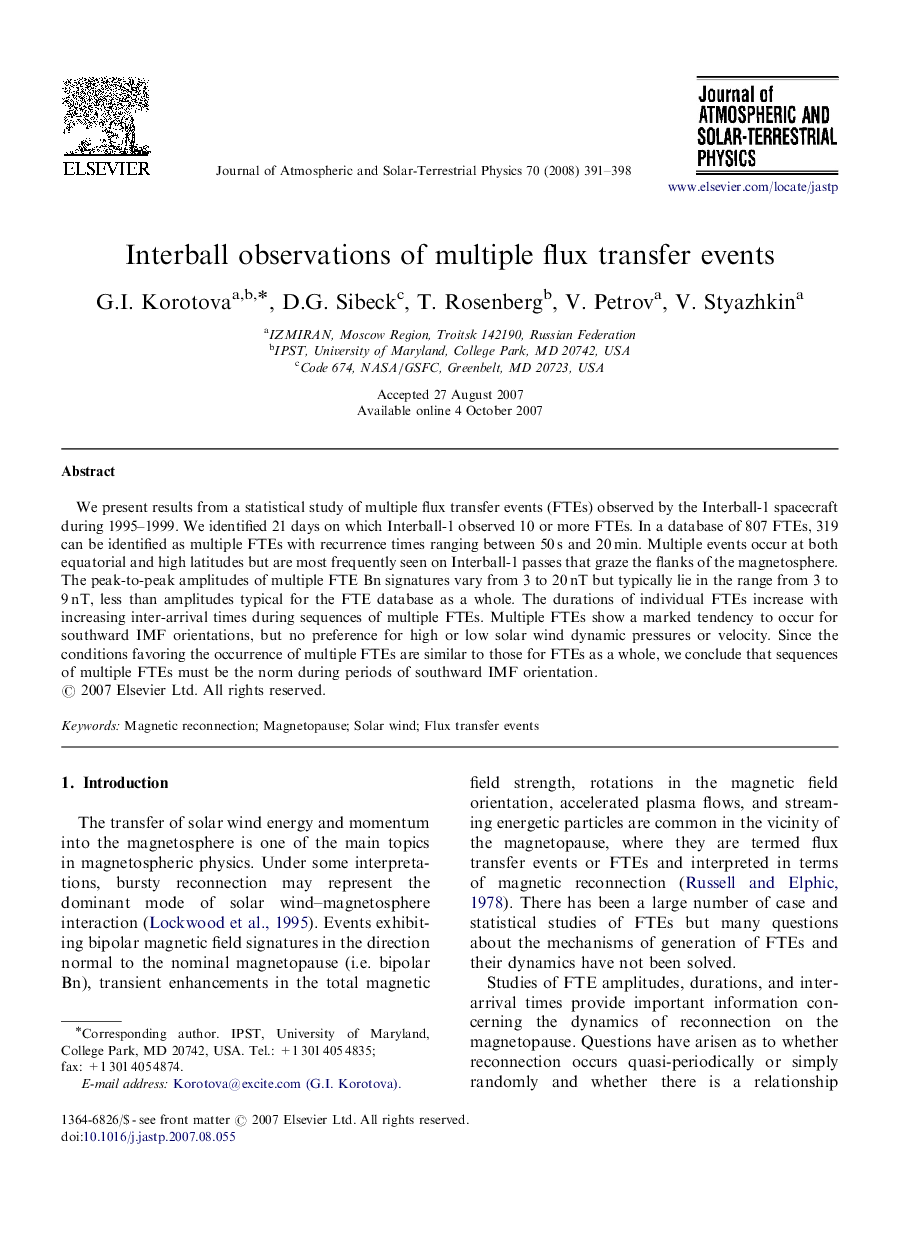| Article ID | Journal | Published Year | Pages | File Type |
|---|---|---|---|---|
| 1778163 | Journal of Atmospheric and Solar-Terrestrial Physics | 2008 | 8 Pages |
We present results from a statistical study of multiple flux transfer events (FTEs) observed by the Interball-1 spacecraft during 1995–1999. We identified 21 days on which Interball-1 observed 10 or more FTEs. In a database of 807 FTEs, 319 can be identified as multiple FTEs with recurrence times ranging between 50 s and 20 min. Multiple events occur at both equatorial and high latitudes but are most frequently seen on Interball-1 passes that graze the flanks of the magnetosphere. The peak-to-peak amplitudes of multiple FTE Bn signatures vary from 3 to 20 nT but typically lie in the range from 3 to 9 nT, less than amplitudes typical for the FTE database as a whole. The durations of individual FTEs increase with increasing inter-arrival times during sequences of multiple FTEs. Multiple FTEs show a marked tendency to occur for southward IMF orientations, but no preference for high or low solar wind dynamic pressures or velocity. Since the conditions favoring the occurrence of multiple FTEs are similar to those for FTEs as a whole, we conclude that sequences of multiple FTEs must be the norm during periods of southward IMF orientation.
